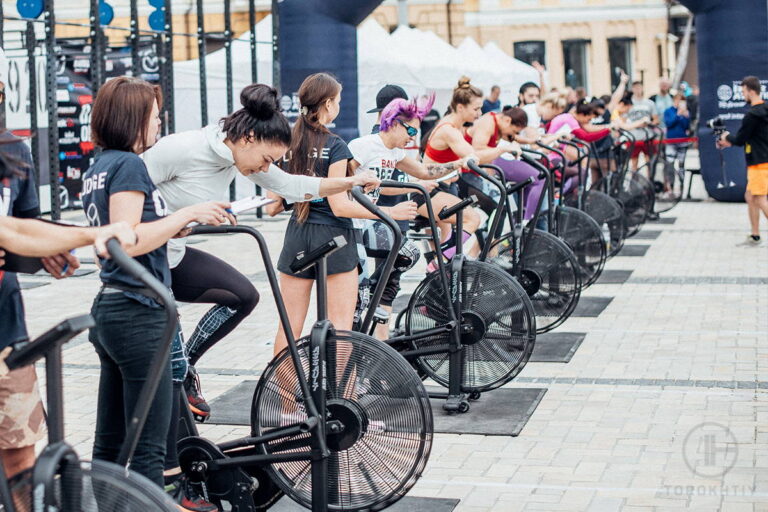Nike Bumper Plate Reviews — Do They Match up to Other Bumper Plate Options?
Bumper plates are an essential accessory for Olympic lifting. They improve overall safety and protect the barbell and metal plates from damage.
With many varieties on the market, we’ve looked at two new ones from Nike with our Nike bumper plates review below.
Nike Bumper Plate Reviews Quick Summary
Nike was founded in 1964 and quickly became popular with its stylish range of health and sports equipment and apparel
1. Nike Rubber Bumper Plates (Grind)
- Item Diameter: 450 mm
- Material: 99% Nike recycled grind rubber
- Weight Range: 10-45 lbs
- Insert Hole Diameter: 2″
- Color: Speckled Gray
- Best Uses for: Olympic Lifting, Weight Training, Functional Fitness
- Bounce: Moderate
The Nike grind bumper plates are constructed using 99% recycled rubber from manufacturing scrap. The plates have a thickness of 1.1-3.2″ depending on weight and each fit 2″ standard barbells. The plate weight range goes from 10-45 pounds, with each one coming in a speckled gray color. They have a moderate bounce and weight precision of +/-1%.
The Nike grind bumper plates are constructed using 99% recycled rubber from manufacturing scrap.
Positives:
Could be better:
2. Nike Rubber Bumper Plates
- Item Diameter: 450 mm
- Material: Virgin rubber
- Weight Range: 10-45 lbs
- Hole Diameter: 2"
- Color: Black
- Best Uses for: Olympic Lifting, Weight Training, Functional Fitness
- Bounce: Low
The Nike rubber bumper plates are made from 100% Virgin rubber with a low bounce. The plates have a thickness of 1-2.8" depending on the weight used, with the range going from 10-45 pounds. Each plate features a 2" hole and comes in a black finish with white branding. The plates have a weight precision of +/-1%.
The plates have a thickness of 1-2.8" depending on the weight used, with the range going from 10-45 pounds.
Positives:
Could be better:
Nike Bumper Plate Reviews: The Main Characteristics and Features
We’ve looked at the two types of Nike weight plates in more detail below.
Nike Rubber Bumper Plates (Grind)
1. Durability
The plates have been drop tested 10,000 times, which proved that they meet strict durability requirements.
2. Versatility
The plates are well-suited for Olympic lifting using standard 2" barbells. The weight range of 10-45 pounds is enough for normal usage.
3. Material Quality
The 99% recycled grind rubber is a great environmentally conscious choice rather than throwing the scrap rubber away. Whilst it has a slightly higher bounce than Virgin rubber, it's still a good quality material.
4. Ease of Use
The plates are well branded and easy to use with the metal casing around the inner holes allowing the barbells to effortlessly slide in.
5. Value for Money
The grind plates offer decent value for money when you think about the versatility and increased safety you get when using them.
| Durability | Material Quality | Versatility | Price/ Quality |
|---|---|---|---|
| 10 | 9 | 10 | 9 |
Nike Rubber Bumper Plates
1. Durability
The plates have been drop tested by Nike over 10,000 times meaning they have passed the test when it comes to durability.
2. Versatility
With 2" hole spacing and a weight range of 10-45 pounds, the rubber plates are great for Olympic and normal lifting.
3. Material Quality
The 100% virgin rubber offers a high-quality material for bumper plates and gives them a low bounce when tested using a durometer score.
4. Ease of Use
The rubber plates are very easy to use, with bold white branding on the sides showing the Nike logo and weight amount. The metal casing on the inner holes allows the barbell to slide in with ease.
5. Value for Money
Overall, the rubber bumper plates are well-designed and offer good value for money. They are a big investment but well worth it when considering the amount of uses and protection provided.
| Durability | Material Quality | Versatility | Price/ Quality |
|---|---|---|---|
| 10 | 9.5 | 10 | 9.5 |
Who Are the Nike Bumper Plates For?
Bumper plates are some of the most expensive equipment pieces to buy due to the expensive manufacturing and shipping processes. Nevertheless, they are well worth the investment considering their multiple uses. They help to improve lifter safety and protect the barbell, weight plates, and floor from damage.
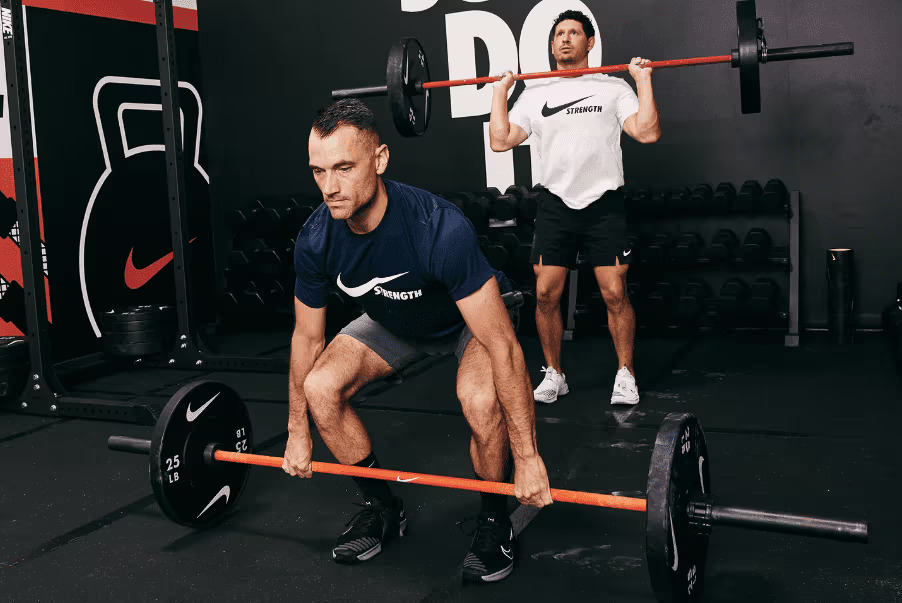
They are particularly useful for Olympic lifting, where you may need to drop the bar between reps. Groups benefiting from the use of bumper plates include:
- Olympic lifters performing cleans, snatches, clean and presses, squats, deadlifts;
- Recreational lifters performing the same movements;
- Normal lifters performing dynamic barbell exercises where the bar may be dropped.
Nike Bumper Plate Alternatives
Here’s how the two Nike bumper plates compare to its competitors:
1. Nike Bumper Plates vs REP Fitness Bumper Plates
All plates are made from rubber, with the exception of the Nike grind plates that use 99% recycled rubber. All plates fit standard 2" barbells and have a +/- 1% weight tolerance. Both the Nike virgin rubber plates and REP Fitness plates have a similar thickness of 1"-2.8" depending on weight, while Nike grind rubber plates are slightly thicker at 1.1"-3.15".
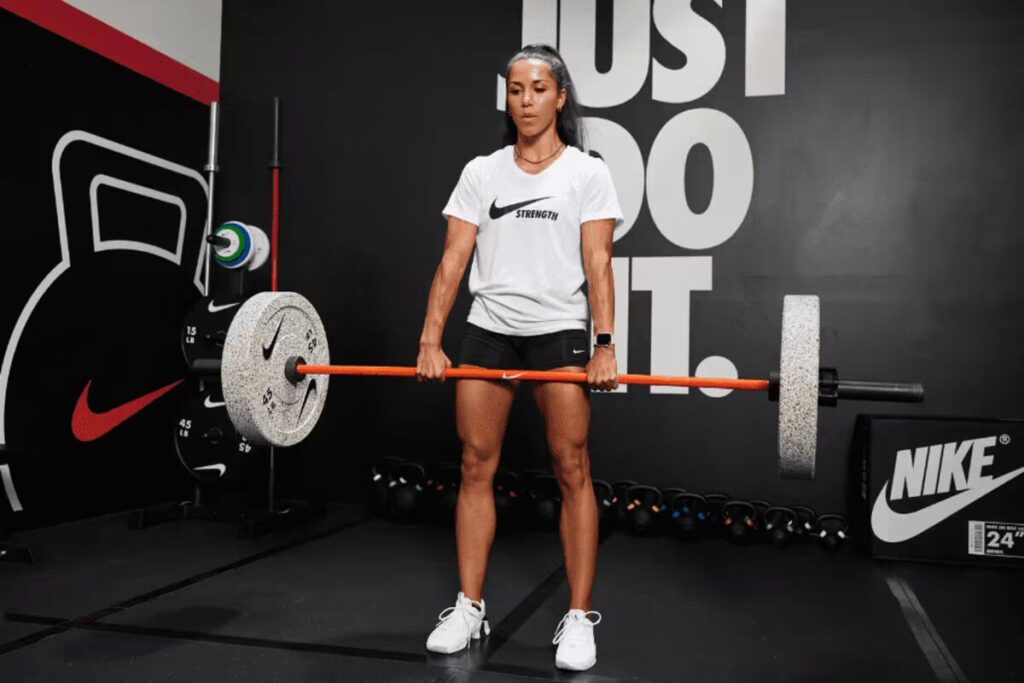
In terms of pricing, the Nike virgin rubber plates are slightly cheaper than the REP Fitness ones, offering better value for money. The Nike grind rubber plates are the most expensive option due to the ecological manufacturing process.
2. Nike Bumper Plates vs Rogue Bumper Plates
Like the Nike rubber bumper plates, the Rogue bumper plates are made from high-quality virgin rubber with stainless steel inserts. Additionally, they both offer minimal bounce, while the Grind plates have a moderate one. The Rogue plates are also slightly thinner than both Nike plates, measuring 0.83"-2.4" depending on the weight.
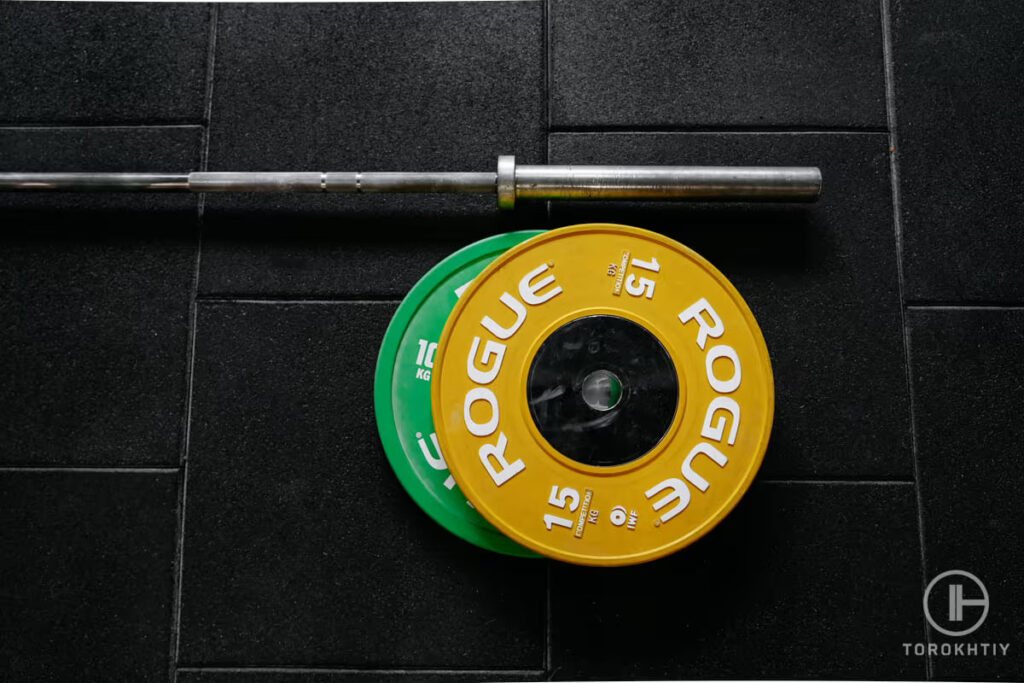
Both Nike plates are considerably cheaper than the Rogue ones, offering excellent value for money. The virgin rubber Nike plates are the cheapest of the three with the grind rubber ones slightly more expensive but more ecologically produced.
FAQ
Are Bumper Plates Better For Home Gyms?
Bumper plates are extremely useful for all types of lifting whether it's in a commercial gym or at home. However, as they help to protect the floor, they may be better in home gyms where the floor might not be as durable.
What Is The Disadvantage Of Bumper Plates?
Perhaps the main disadvantage of bumper plates is the cost due to the expensive production and shipping process. Many people choose not to purchase them due to this without realizing the full benefits.
Conclusion
In terms of market standards, the Nike barbell plates match up well to the already established competitors. They are well designed and constructed, with the grind rubber option providing a choice for those who are more environmentally conscious.
Do you like the Nike bumper plates? What do you think of the two offerings above? Let me know in the comments below.
Also read:
Why Trust Us?
With over 20 years in Olympic Weightlifting, our team does its best to provide the audience with ultimate support and meet the needs and requirements of advanced athletes and professional lifters, as well as people who strive to open new opportunities and develop their physical capabilities with us.
All products we select are primarily approved and tested by the Olympic Weightlifting Champion Oleksii Torokhtiy. Under his guidance, we provide honest and reasonable assessments of the products we review by checking their characteristics, packaging, design, comfort and durability features, and general product rating. We select products from only high-quality and trusted sports brands, thus vouching for their quality.
The product testing process is described in more detail here
Author: Ihor Shymechko
Pro Olympic Weightlifter, Coach
Best Results: Snatch – 208 kg,
C&J – 240 kg
Ihor has been a professional weightlifter since 1996, boasting over two decades of competition experience. His notable achievements include clinching the European Championship in 2009 and securing a silver medal in the 105kg division at the Senior World Championships in 2011. Ihor represented his country in the 2008, 2012, and 2016 Summer Olympics. After retiring from competitive weightlifting, he transitioned to coaching, leveraging his vast experience to guide athletes who now compete on both national and international stages.

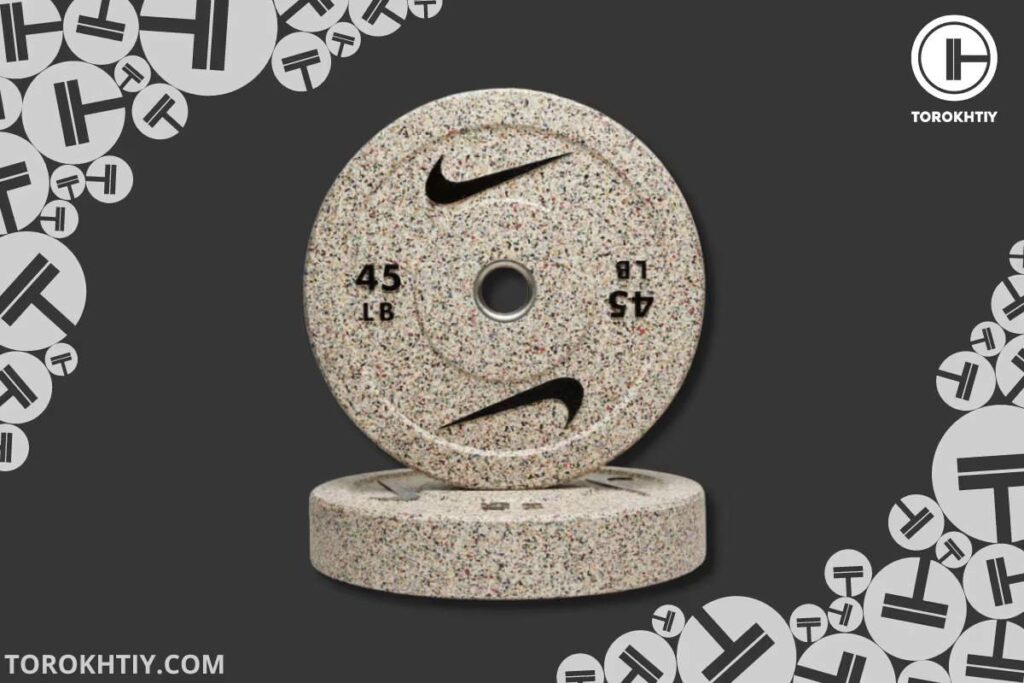
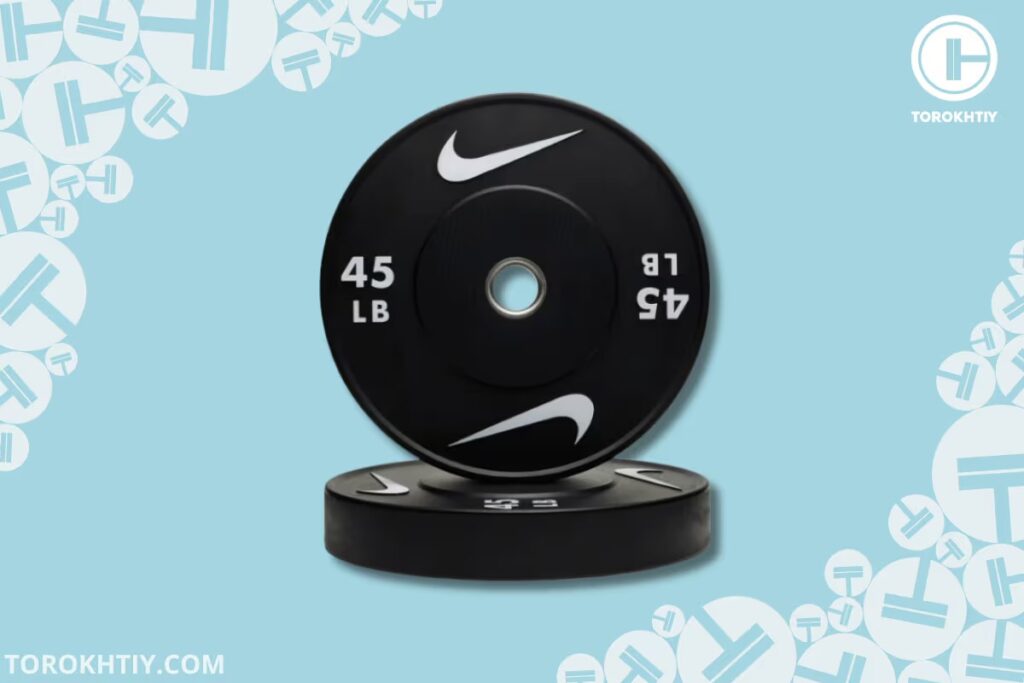

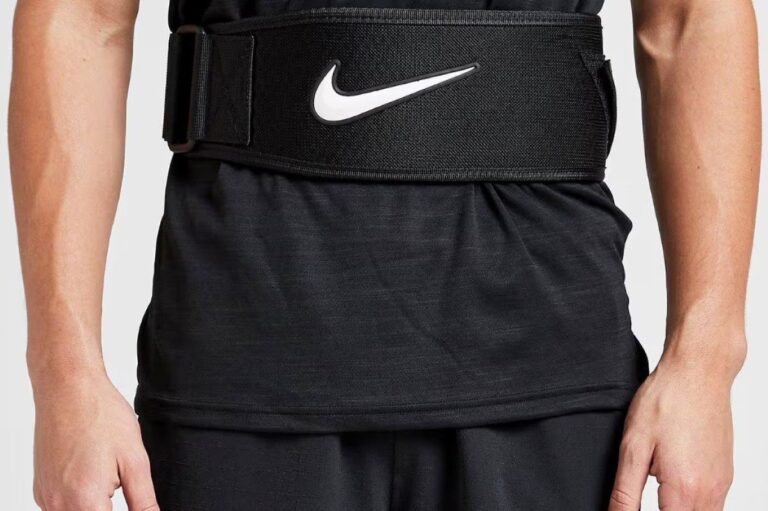

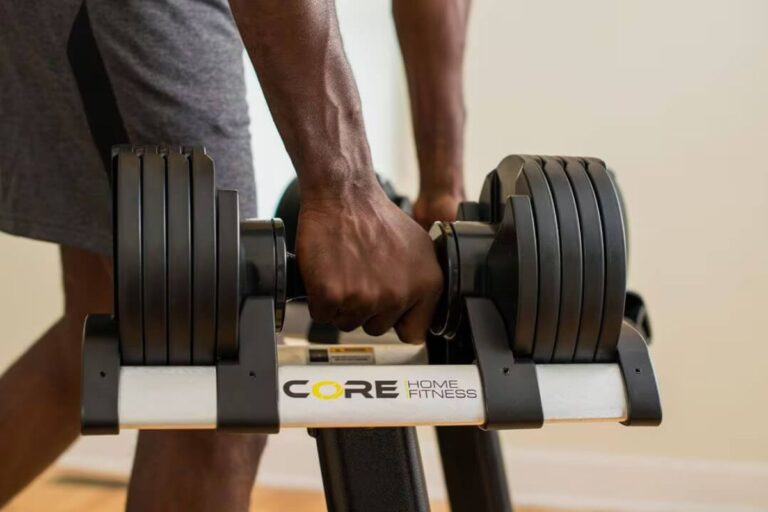
![Schwinn Airdyne AD7 Review [Year]](https://torwod.com/wp-content/uploads/2024/02/training-air-bike-man-768x512.jpg)

